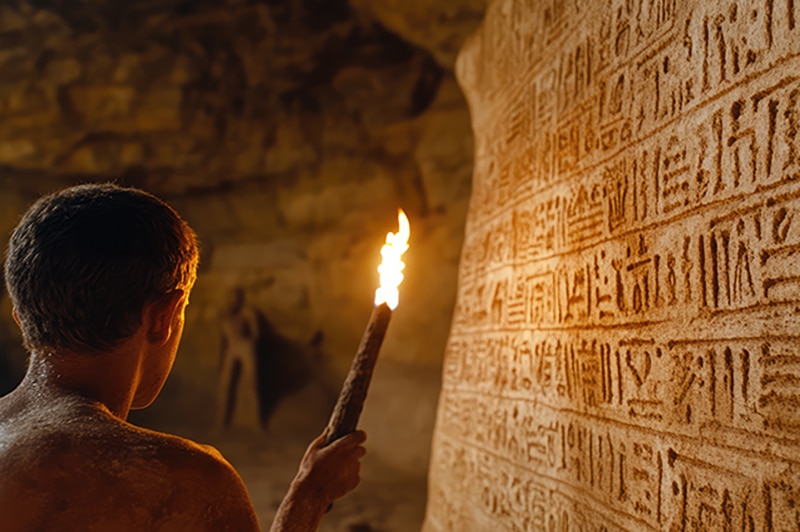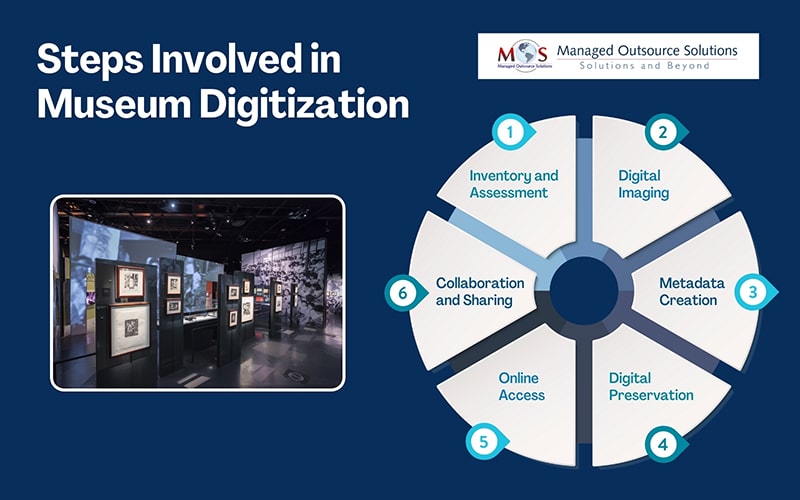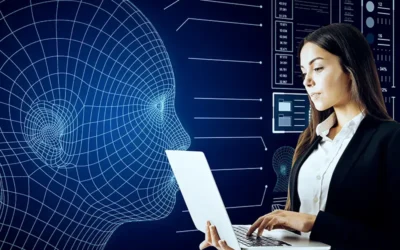Before the digital era in the sense of widespread internet and digital storage solutions, cultural and historical heritage preservation often relied on physical media such as diskettes, CDs, DVDs, microfilm, and magnetic or punched tapes. These formats were used to store and archive data, but they have limitations in terms of accessibility, durability, and technology obsolescence. Document digitization services enable modern museums to truly preserve their historical artifacts in a lasting way. The process involves creating high-quality photographs or scans of artifacts, ensuring details are captured for online viewing.
Brick-and-mortar museums do provide an interactive experience, but document scanning and imaging go a step further by preserving and protecting artifacts while also making the digitized collections more accessible to a global audience. This approach maintains an engaging and immersive experience.
Leading Museum Digitization Projects
Digitization projects aim to make museum collections more accessible while preserving cultural heritage for future generations. There are numerous museum digitization efforts in force across the nation, including major projects such as those of the Library of Congress and the Smithsonian Institution as well as smaller local projects.
The Library of Congress and the Smithsonian Institution are among the most prestigious cultural institutions in the United States and possibly the largest library and museum in the world. Both institutions have extensive digitization projects that aim to broaden global access to their collections, reports SUAU Diversified.
The Library of Congress houses 171 million items including books, recordings, photographs, maps, manuscripts, and musical works. The Smithsonian Institution manages a diverse array of collections of over 156 million artifacts across its various museums and research centers. Both the Library of Congress and the Smithsonian have made significant strides in digitizing their historical and cultural artifacts. The Smithsonian’s extensive and varied collections require a range of digitization techniques, including 3D digitization for natural history and cultural objects. Both institutions are committed to ensuring their digital content is highly accessible, focusing on both user engagement and technical standards.
On a smaller scale, there’s the Hudson River museum digitization drive. This project was recently awarded a prestigious grant from the Institute of Museum and Library Services (IMLS) Museums for America. This grant is intended to support the Museum’s digitization of approximately 8,000 collection objects largely consisting of historical photographs representative of the Museum’s local and regional communities (www.iloveny.com).
Benefits of Museum Digitization
Increases Transparency
Digitizing public archives also promotes transparency by providing a clear and accessible record of historical events. This openness helps people gain a more accurate understanding of the past, ensuring that historical information is readily available and comprehensible.
Reduces Wear and Tear on Collections
Digitization eliminates the need for handling and exposure of physical artifacts, which helps prevent wear and tear. Even with protective measures, museum displays subject artifacts to light and environmental factors. Digital preservation captures and maintains the item’s condition as it is, safeguarding it indefinitely.
Enhances Research and Educational Opportunities
Digitizing museum collections significantly improves research and education by making items easily searchable and linkable. Researchers no longer need to sift through physical boxes or documents; digital files streamline access and expose materials that might otherwise go unnoticed. This enhanced accessibility allows a global audience to engage with the collections more effectively.
Alleviates Storage Concerns
Digital archiving reduces the pressure on museums and historical societies to find physical storage space for artifacts. By digitizing collections, institutions can manage and organize materials without the constraints of physical storage. This approach also allows for the safekeeping of original items in long-term storage, protecting them from damage and overuse.
Steps Involved
Museum digitization involves several key processes:
- Inventory and assessment: Cataloging existing items to understand what is in the collection and their condition.
- Digital imaging: Producing high-resolution photographs or scans of artifacts to capture intricate details for online viewing.
- Metadata creation: Developing descriptive information for each item, including title, creator, date, and context, to facilitate searchability.
- Digital preservation: Ensuring that digital files are stored securely and backed up to prevent data loss.
- Online access: Developing user-friendly platforms or websites where the digitized collections can be accessed by the public.
- Collaboration and sharing: Partnering with other institutions or platforms to broaden access and share knowledge.
However, museums face several challenges during the digitization process. Budget constraints can restrict the scope and scale of digitization efforts. Even after digitization is complete, organizing, storing, and preserving large volumes of digital files over time can be complex. Minimizing risk of data loss or obsolescence is critical. Developing consistent metadata standards and formats for diverse collections can be difficult, especially across different institutions. Navigating intellectual property rights and obtaining permissions for digitizing certain items can also be challenging. Ensuring that digitized content is engaging and accessible to diverse audiences can require additional resources and expertise.
Lack of technical expertise is a key drawback. Without the necessary technical skills or staff training, it can be difficult if not impossible to effectively implement digitization processes. Access to high-quality imaging and scanning equipment may be limited, affecting the quality of digitized materials.
To tackle the challenges of scanning and digitizing museum collections, outsourcing these tasks can be incredibly beneficial. Leading digitization and document scanning services have the expertise and experience needed to handle delicate and valuable items, ensuring their preservation. They use cutting-edge technology that many museums might not have access to, like high-resolution scanners and advanced image processing software.
By outsourcing, museums can save significantly on costs related to in-house equipment and staffing. This professional support not only enhances access to collections but also helps keep cultural heritage safe for future generations.
Bring your valuable documents into the digital age with our professional document digitization





